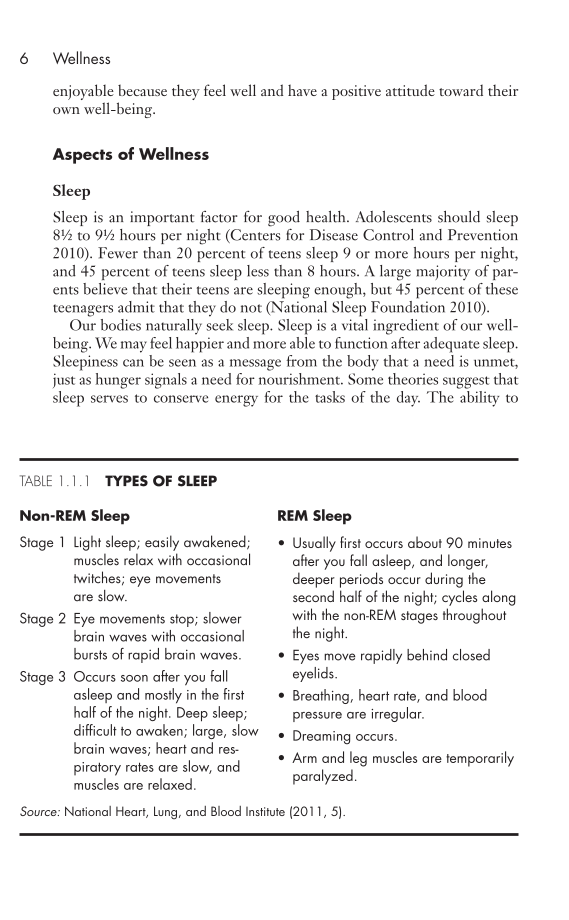6 Wellness enjoyable because they feel well and have a positive attitude toward their own well-being. Aspects of Wellness Sleep Sleep is an important factor for good health. Adolescents should sleep 8½ to 9½ hours per night (Centers for Disease Control and Prevention 2010). Fewer than 20 percent of teens sleep 9 or more hours per night, and 45 percent of teens sleep less than 8 hours. A large majority of par- ents believe that their teens are sleeping enough, but 45 percent of these teenagers admit that they do not (National Sleep Foundation 2010). Our bodies naturally seek sleep. Sleep is a vital ingredient of our well- being. We may feel happier and more able to function after adequate sleep. Sleepiness can be seen as a message from the body that a need is unmet, just as hunger signals a need for nourishment. Some theories suggest that sleep serves to conserve energy for the tasks of the day. The ability to Table 1.1.1 Types of Sleep Non-REM Sleep REM Sleep Stage 1 Light sleep easily awakened muscles relax with occasional twitches eye movements are slow. Stage 2 Eye movements stop slower brain waves with occasional bursts of rapid brain waves. Stage 3 Occurs soon after you fall asleep and mostly in the first half of the night. Deep sleep difficult to awaken large, slow brain waves heart and res- piratory rates are slow, and muscles are relaxed. Source: National Heart, Lung, and Blood Institute (2011, 5). • Usually first occurs about 90 minutes after you fall asleep, and longer, deeper periods occur during the second half of the night cycles along with the non-REM stages throughout the night. • Eyes move rapidly behind closed eyelids. • Breathing, heart rate, and blood pressure are irregular. • Dreaming occurs. • Arm and leg muscles are temporarily paralyzed.
Document Details My Account Print multiple pages
Print
You have printed 0 times in the last 24 hours.
Your print count will reset on at .
You may print 0 more time(s) before then.
You may print a maximum of 0 pages at a time.


























































































































































































































































































































































































































































































































































































































































































































































































































































































































































































































































































































































































































































































































